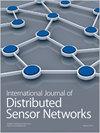物联网中基于期望-条件最大化信道估计的无阈值多属性物理层认证
IF 2.5
4区 计算机科学
Q3 COMPUTER SCIENCE, INFORMATION SYSTEMS
International Journal of Distributed Sensor Networks
Pub Date : 2022-07-01
DOI:10.1177/15501329221107822
引用次数: 0
摘要
随着物联网设备数量的不断增加,物联网通信系统的内生安全性越来越重要。物理层身份验证是利用无线信号和物理设备固有的独特特性来抵御主动攻击的强大手段。许多现有的物理层认证方案通常假设物理层属性服从接收器未知的某些统计分布。为了克服这种不确定性,已经采用了基于机器学习的身份验证方法来实现无阈值身份验证。在本文中,我们使用期望-条件最大化算法来提供认证阶段所需的物理层属性估计,并使用逻辑回归模型来实现无阈值物理层认证。此外,考虑使用Frank–Wolfe算法来实现逻辑回归参数的快速收敛,并采用多属性来增加变送器的微分。仿真结果表明,所获得的属性估计足以为认证提供可靠的数据来源,所提出的无阈值多属性物理层认证方案可以有效提高认证精度,误报率P f降低到0.0263%,漏检率P m降低到0.3466%。本文章由计算机程序翻译,如有差异,请以英文原文为准。
Threshold-free multi-attributes physical layer authentication based on expectation–conditional maximization channel estimation in Internet of Things
With the number of Internet of Things devices continually increasing, the endogenous security of Internet of Things communication systems is growingly critical. Physical layer authentication is a powerful means of resisting active attacks by exploiting the unique characteristics inherent in wireless signals and physical devices. Many existing physical layer authentication schemes usually assume physical layer attributes obey certain statistical distributions that are unknown to receivers. To overcome the uncertainty, machine learning–based authentication approaches have been employed to implement threshold-free authentication. In this article, we utilize an expectation–conditional maximization algorithm to provide the physical layer attribute estimates required for the authentication phase and a logistic regression model to achieve threshold-free physical layer authentication. Moreover, a Frank–Wolfe algorithm is considered to achieve fast convergence of the logistic regression parameters and multi-attributes are adopted to increase the differentiation of transmitters. Simulation results demonstrate that the obtained attribute estimates are sufficient to provide a reliable source of data for authentication and the proposed threshold-free multi-attributes physical layer authentication scheme can effectively improve authentication accuracy, with the false alarm rate P f reduced to 0.0263% and the miss detection rate P m reduced to 0.3466%.
求助全文
通过发布文献求助,成功后即可免费获取论文全文。
去求助
来源期刊
CiteScore
6.50
自引率
4.30%
发文量
94
审稿时长
3.6 months
期刊介绍:
International Journal of Distributed Sensor Networks (IJDSN) is a JCR ranked, peer-reviewed, open access journal that focuses on applied research and applications of sensor networks. The goal of this journal is to provide a forum for the publication of important research contributions in developing high performance computing solutions to problems arising from the complexities of these sensor network systems. Articles highlight advances in uses of sensor network systems for solving computational tasks in manufacturing, engineering and environmental systems.

 求助内容:
求助内容: 应助结果提醒方式:
应助结果提醒方式:


